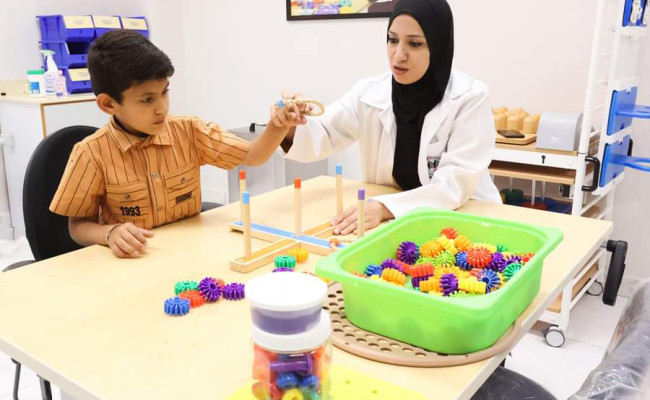Abstract
Patients in intensive care units are at high risk for eye problems due to the loss of normal physiologic defense
mechanisms of the eyes in addition to the drawback effect of the mechanical ventilation & the use of sedations
which leads to decrease tear production and increase evaporation due to eye lid opening. Aim: to examine the
impact of a designed eye care protocol on nurses’ knowledge, practices and on eye health status of unconscious
mechanically ventilated patients at, Jenin, Tulkarm and Nablus Hospitals-North Palestine. Quasi-experimental
design was used. The study sample: consists of 35 nurses (16 male and 19 female), age mean ± SD 30.97 ±
7.90, working in the ICU departments in three main governmental hospitals and 70 patients (45 male and 25
female), age mean ± SD 57.02 ± 20.14 who fulfilled the inclusion criteria to be part of this research sample..
Tools and Data collection: data were obtained through three tools; Pre/Post knowledge questionnaire
assessment schedule, eye care practices observational checklist, and eye health status assessment sheet. The
educational, instructional, and demonstrational programs were designed according to nurse’s educational needs;
an illustrated booklet was also utilized. Results: There were statistical significant differences in the total
knowledge scores regarding eye care of unconscious mechanically ventilated patients when pre-test Mean (SD)
1.553±(0.210) is compared with post-test 1.6467± (0.155) (p<0.05) and when pre-test is compared with 2 month
follow 1.644±(0.143) (p<0.05). There were high statistical significant differences in the total and subtotal
practice scores regarding eye care of unconscious mechanically ventilated patients when pre-test Mean (SD)
1.3419± (0.24579) is compared with post-test 2.3829±(0.11472)(P<0.01) and when pre-test is compared with 2
months follow 2.0819±(0.18210) p < 0.01 and when post-test 2.3829±(0.11472 is compared with 2 months
follow 2.0819±(0.18210 (p < 0.01) following protocol application. The results revealed that the percentage of no
exposure of the eye lid was significantly higher in the post-test 54.3% when is compared with pre-test 22.9%
after protocol application (p<0.05) The results showed that 17.1% of patient had absence conjunctival odema in
pre-protocol application when is compared with post-application, 31.4% of patient had absence conjunctival
odema (p<0.05). For conjuctival injection, the percent in pre- test was 37.1% and in post-test was 54.3%, the
difference is significant (p<0.05). Research hypotheses were supported in which nurse’s knowledge, practices,
and eye health state showed sustainable improvement. Conclusion: Palestinian critical care nurses were lacking
some knowledge and practices regarding eye care. The educational handout, demonstrations and the designed
protocol showed a positive impact in improving nurse’s knowledge and practices and in lowering the percentage
of eye health complications. Recommendations: the study recommended establishing a written updated protocol
for eyes assessment and care with continuous education & appraisal to ensure enough knowledge, and complete
safe practices, which certainly leads to minimizing the incidence of eye complications.
Key words: Designed Eye Care Protocol, Nurses Knowledge, Nurses Practices, Eye Care. Eye Health Status,
Unconscious Mechanically Ventilated Patients.
Authors
1Imad Hussein Deeb Fashafsheh
2WardaYousef Mohamed Morsy
3Manal Sayed Ismaeel and 4Aidah Abu Elsoud Alkaiasi
Pages From
107
Pages To
120
ISSN
ISSN (Paper)2222-1735 ISSN (Online) 2222-288X
Journal Name
Journal of Education and Practice
Volume
4
Issue
28
Keywords
Designed Eye Care Protocol, Nurses Knowledge, Nurses Practices, Eye Care. Eye Health Status, Unconscious Mechanically Ventilated Patients.
Abstract






